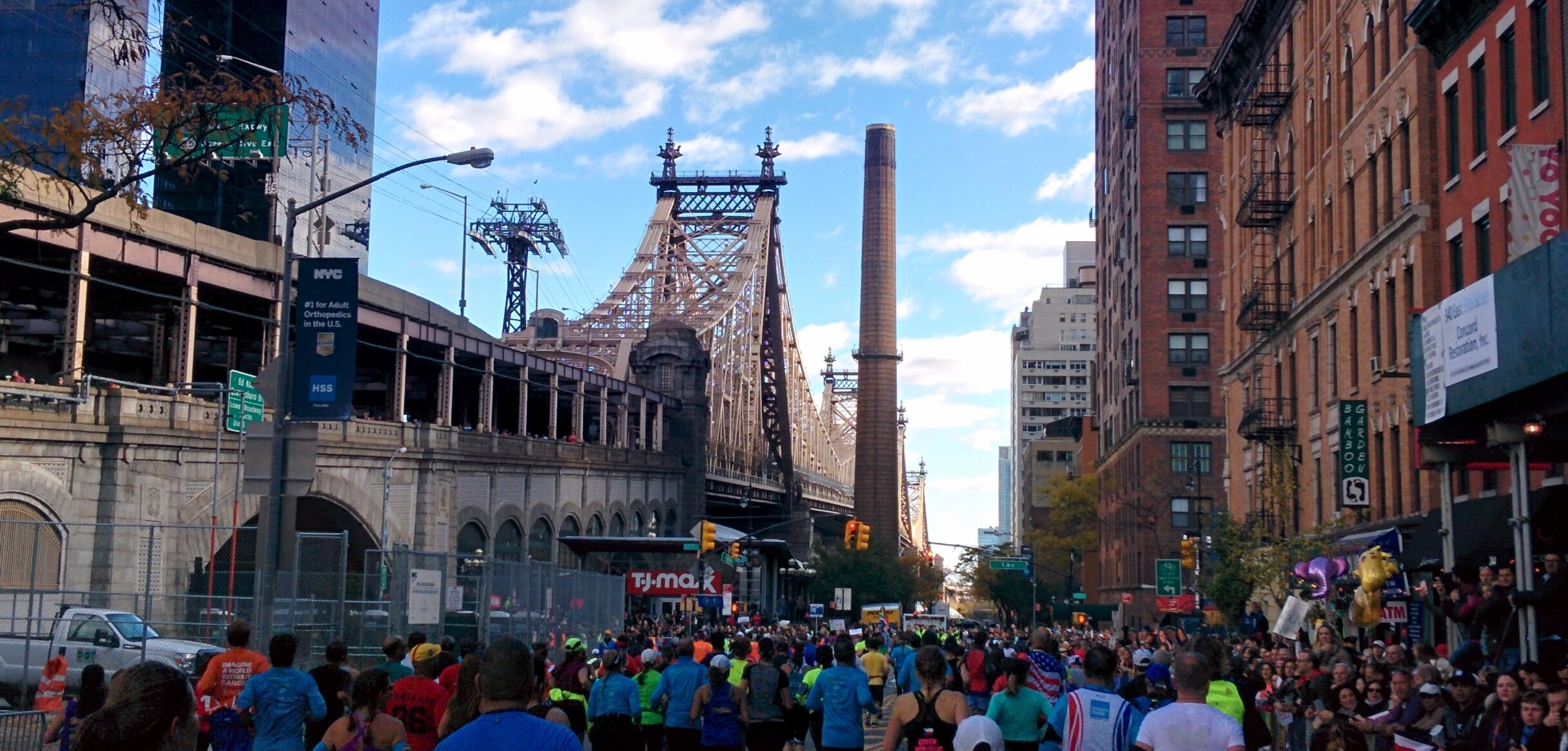News
NOW OFFERING RACE-SPECIFIC TRAINING PLANS!
A few weeks ago I talked about how fitness devices are not as smart as they may seem at face value. While this is certainly true, it’s also true that technology can be thoughtfully incorporated into endurance sports training with the right mindset and approach. This week concludes a mini series of Coach Tip Tuesdays where we are discussing certain technologies and how athletes can best implement them. We’ve covered Heart Rate-Based Training and Power-Based Training; this week we’re going to dive into Pace-Based Training.
Pace (or speed) is - by far - the metric that athletes obsess the most over. I understand why this is; athletes are rated and ranked based on their time on a finish clock. In addition, many races have time limits that require athletes to maintain a specific pace. More than any other metric, athletes tend to tie pace to their sense of self-worth and accomplishment. I cannot begin to count the times that an athlete told me that their mood or emotions were impacted by their pace on a given day.
Pace-Based Training occurs when an athlete uses pace as the target metric for a given workout. Out of the three most common endurance sports that I coach (running, cycling, and swimming), running is the one where Pace-Based Training is most feasible. Though Pace-Based Training can be used in both swimming and cycling, it’s been my experience that athletes struggle more to successfully implement it in these sports. For the purposes of this article, I will be focusing on Pace-Based Training as it relates to running.
There are several pace ranges that are utilized in Pace-Based Training; here are the ones I utilize most (in order from easiest to hardest in terms of effort):
The process of successfully implementing Pace-Based Training is very similar to successfully implementing Power-Based Training:
In order to successfully implement Pace-Based Training, an athlete does need to be able to accurately measure their pace. As I’ve discussed in the past, it’s important to ensure that the data being collected is accurate because bad data is worse than no data. When it comes to pace (speed) data collection, there are a few important things to keep in mind:
In order to successfully implement Pace-Based Training, you must determine your own personal pace ranges via threshold testing. This is best done via a 1-mile, 5K, or 30-minute threshold test. Which distance is best for this test depends on a lot of factors, to include the athlete’s current fitness, target event, and the athlete’s current mental tolerance for discomfort and suffering.
No matter which distance is being used as the test interval, complete a 10-15 minute easy Warm-Up, complete the test interval, and then cool-down at an easy effort for another 10-15 minutes. (For more details on how you can determine your own pace ranges, please connect with me.)
Threshold testing like this is one of the only times in training where the workout must be completed exactly as it is planned. If any mistakes or modifications are made, the data is useless and must be discarded. Remember: The only way this type of training works is if the baseline data is accurate. So, if they cannot complete the test exactly as planned, the athlete needs to redo the test, but there’s a waiting period involved. Since these tests do ask athletes to go their hardest, there needs to be a period of recovery before the athlete will be truly ready to go their hardest again.
There are situations where it is not necessary to use a threshold test to determine pace ranges. In fact, I often don’t use threshold testing in work with athletes on Performance Coaching to determine pace ranges. More often than not, I gather data from an athlete over a several weeks; I see what paces they are actually currently maintaining in training when I plan workouts, to include when I note Rating of Perceived Exertion (RPE) ranges. What pace are they completing “easy” workouts at? What pace are they completing “moderate” workouts or intervals at? Observing this over a period of time allows me to get a feel for what an athlete is truly currently able to do, and then I base any pace range recommendations off of that.
It is incredibly important to train at one’s current ability level. Trying to hit paces that are outside of one’s ability will result in overtraining, burnout, and increased injury risk. For this reason, it’s incredibly important to be honest and wise when selecting events where there are pace-based goals or (in the event that an athlete is slower than cutoff pace) races where there are strict time cutoffs. The timeline to be ready for goals or events like this may well be longer than you want it to be, but the only way to ultimately successfully reach these goals is to train where you currently are and build progress from there.
The next step is to design training that is based off of your own personalized pace ranges. This means that you will complete workouts while monitoring your pace and staying within the prescribed range as planned.
Because pace is an instantaneous measure of the velocity that the body is traveling at, I have found that monitoring rolling averages is the most useful thing in training, especially when completing specific workouts that contain intervals. Many devices (such as Garmin) have an option to display the Average Page and Lap Average Page. I recommend having at least the Lap Average Pace displayed on one’s device.
Some workouts may ask an athlete to stick to one pace range for the entire workout. Others may specify different pace ranges for different intervals. How the workout is structured depends on what the goal of the individual workout is and how it fits into a greater context of the overall Training Plan.
As you’ve heard me say so many times over the years, consistency is extremely important in all endurance sports training, but it’s especially important in Pace-Based Training.
In order for athletes to derive the benefits of Pace-Based Training, an athlete must stick to a training plan designed around power consistently for at least three months. When I say “a training plan designed around pace,” I mean that at least 95% of the workouts in those three months must be designed around pace and completed by sticking to the prescribed pace ranges in that workout. Doing this type of training in one workout once a week will not yield the intended results; it must be done consistently in almost all workouts. Training adaptations generally take at least 12 weeks (three months) to occur in the body; hence why one must be consistent for at least three months to reap the benefits of this type of training.
In my experience, this is definitely the biggest challenge for athletes, and it’s where most athletes “fail” at Pace-Based Training. It’s not uncommon to hear “Pace-Based Training didn't work for me” and the root cause of that statement is that the athlete wasn’t willing to stick with the plan day-in-and-day-out for at least three months.
During this time, athletes will have to get used to continuously monitoring their pace, regardless of the terrain they are on for their workout. This can be quite the challenge for some athletes, as it may require going much slower than they have in the past or than they want to. They may also find it challenging to hit faster specific pace targets. For Pace-Based Training to be effective, it is important to check one’s ego at the door and to get comfortable with being uncomfortable, mentally and physically.
Pace-Based Training, like Power-Based Training and Heart Rate-Based Training, is extremely useful for helping athletes develop self-awareness. Over the course of my coaching career, the most valuable use of Pace-Based Training is to help athletes learn what “easy” really feels like and what “slow” really is.
On the other side of the coin, this type of training can be really useful to help push athletes who are naturally conservative into the training efforts and pace ranges that are necessary in order to elicit adaptations in the body and therefore make performance gains in endurance sports. For athletes who are afraid to push themselves, Pace-Based Training can provide an effective framework for them to do so.
Pace-Based Training can enable athletes to more effectively track their effort in interval workouts (workouts where there are intervals completed at a higher intensity). In my experience, this is especially valuable for tempo workouts, where dialing in on the proper exertion level is really important to benefit from the workout.
Simply put, Pace-Based Training can help athletes calibrate their own Rating of Perceived Exertion (RPE), which is one of the most important and useful things any athlete can ever learn.
Like all things, Pace-Based Training does have its limitations. One of the biggest ones is paradoxical, because it’s the same reason why Pace-Based Training is valuable as a training tool in the first place: Pace is a measure of the actual velocity (speed) the athlete is traveling at, regardless of ambient conditions or other factors.
Though it is a wonderful tool, pace is always relative to what is happening in the body. Other metrics such as heart rate, Rating of Perceived Exertion (RPE), motivation, and fitness round out the picture to provide a clear view of how a given day is going for you. Relying on pace exclusively can be a really big limiter. It can hold an athlete back if all things are “in sync” on a given day, and it can push an athlete too far if they are having an off day and are still trying to hit a certain pace target they feel they “should” be able to hit.
Because of this, it’s important to continually hone self-awareness so you can accurately determine when other stressors or conditions are in play that are impacting your effort levels on a given day. When this is the case, it’s important to modify your strategy and use a combination of RPE along with pace to guide your training for the day (or your race plan if there are additional stressors in play on race day).
Pace-Based Training is a bit paradoxical, as it can be both a humbling and an empowering way to train. Athletes who are willing to check their pace egos at the door and really submit to the process of Pace-Based Training can unlock a powerful tool in their Athlete’s Toolbelt to help them achieve performance-based goals in both training and racing.



































































































Have a question or ready to get your TRAINING started?
Fill out our Contact Form to the right and we will get back to you shortly!